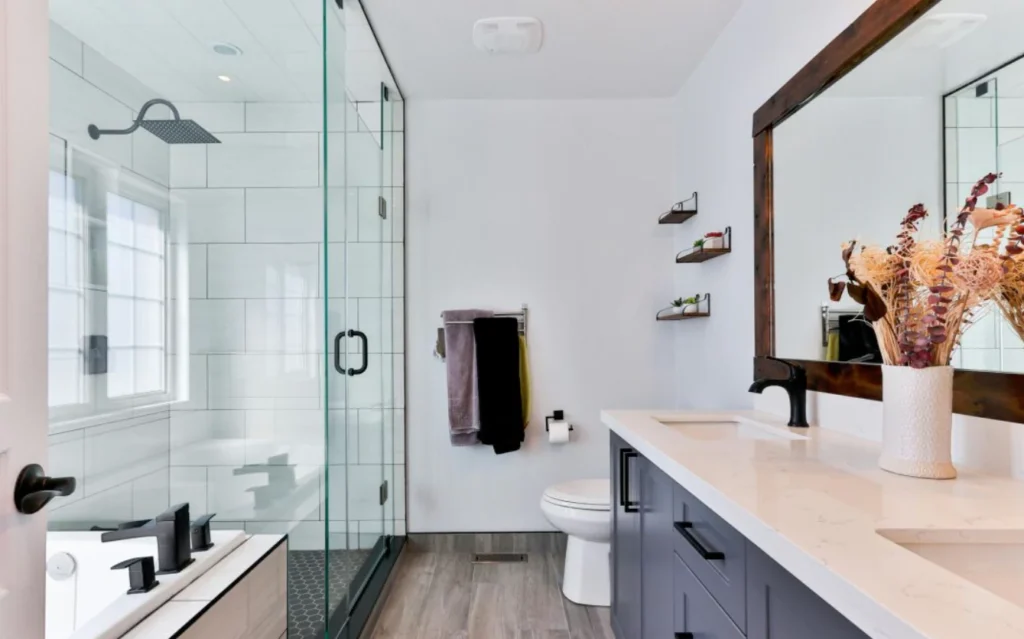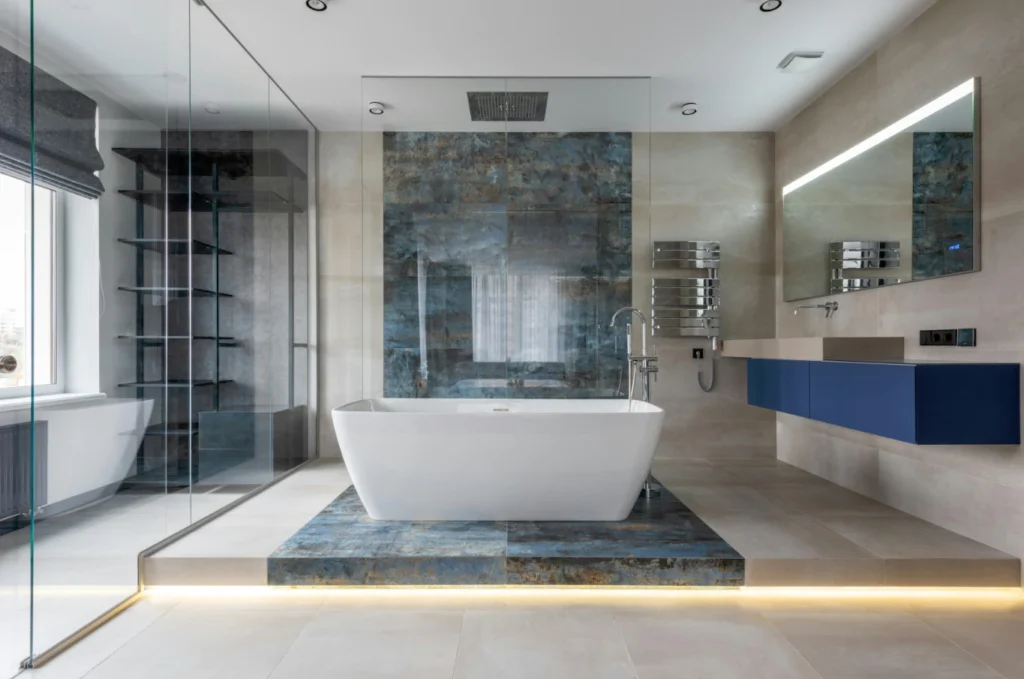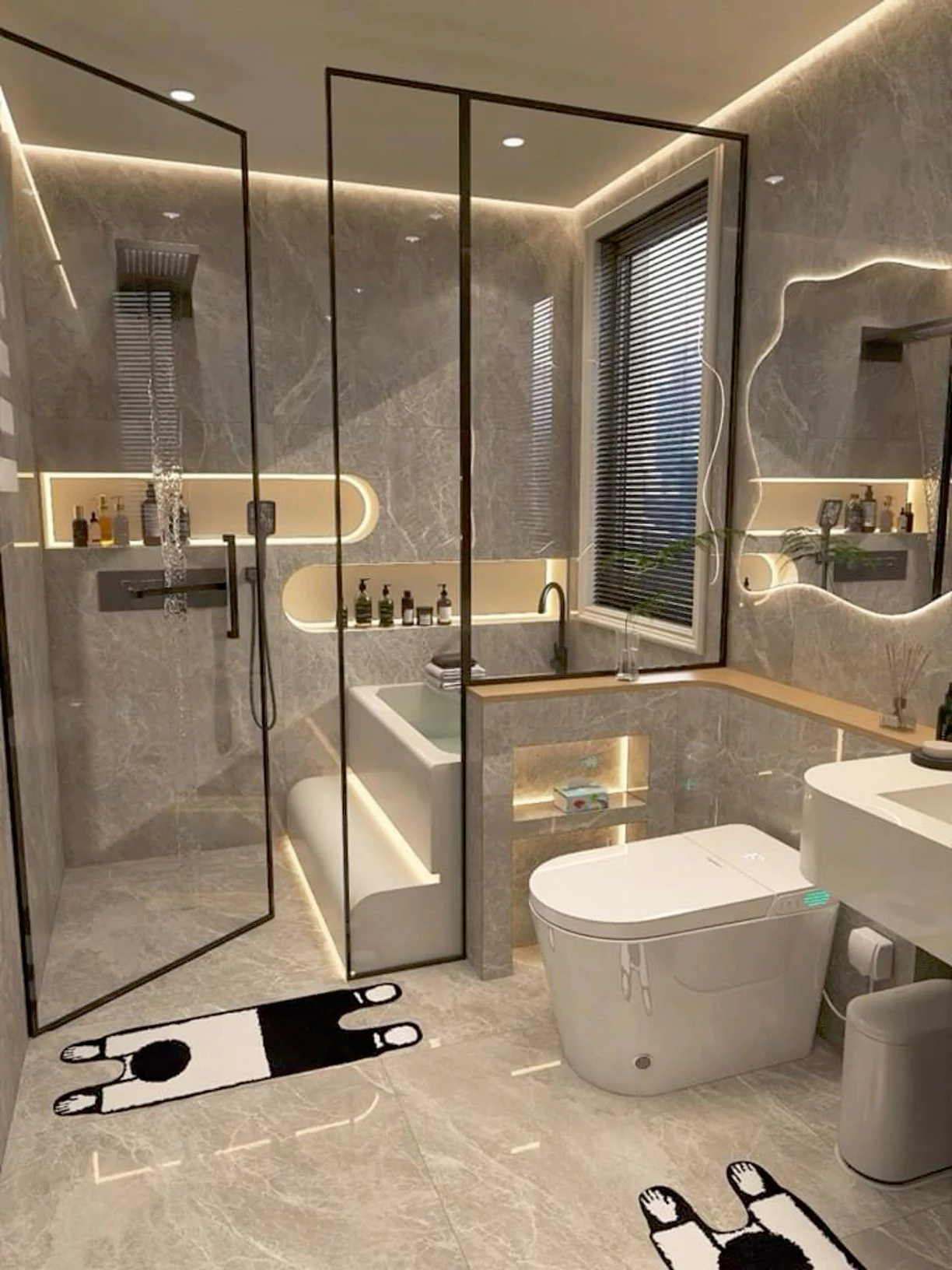When you’re planning a bathroom renovation or reviewing a property listing, the term “full bathroom” often comes up, but what does it really mean?
Simply put, a full bathroom includes everything you need for daily hygiene and comfort. It’s not just about the number of fixtures, but how they work together to create a complete and functional space.
Whether you’re a homeowner, renter, or real estate investor, understanding what a full bathroom contains can help you make smarter decisions when buying, designing, or upgrading a home.
What Is a Full Bathroom?
A full bathroom is a space in your home that includes all the essential fixtures for bathing and hygiene, typically a toilet, sink, shower, and bathtub. If your bathroom has all four, it’s considered a “full bath” in real estate terms. Whether you live in an apartment, townhouse, or a single-family home, knowing what makes a bathroom “full” helps when you’re remodeling or buying a property.
Understanding this definition also helps when you’re browsing listings or working with a contractor. Some homes may advertise a “full bathroom” even if it doesn’t have a tub, which can affect your decision depending on your needs.

What Does a Full Bathroom Contain?
A full bathroom contains a toilet, a sink, a shower, and a bathtub, all in one complete space. These four fixtures cover all your basic hygiene needs, making the bathroom fully functional for daily use.
The things a full bathroom contains include the following:
- Toilet: This is the basic fixture for sanitation and is usually placed in a corner or against a wall for privacy. It comes in various styles like one-piece, two-piece, or wall-mounted models.
- Sink: Used for handwashing and grooming, the sink often includes a countertop and storage. You’ll find options like pedestal sinks, vanity sinks, or wall-mounted styles depending on your space.
- Bathtub: A bathtub allows for soaking and relaxation, which adds comfort and versatility to your bathroom. It can be a standalone tub, a built-in style, or a shower-tub combo.
- Shower: The shower offers a quick and efficient way to bathe and is essential in a full bath. It may be enclosed with glass doors or simply a showerhead over the bathtub.
What are Common full Bathroom Layouts?
The common full bathroom layouts are one-wall layouts, L-shaped layouts, and split layouts. Each design arranges the toilet, sink, shower, and bathtub in a way that balances space, comfort, and traffic flow depending on your room size and shape.
The following are common full bathroom layouts:
- One-Wall Layout: All the main fixtures, sink, toilet, shower, and tub, are aligned along a single wall. This design is cost-effective because it simplifies plumbing and saves space. It’s commonly used in smaller bathrooms or apartment settings where layout efficiency matters.
- L-Shaped Layout: Fixtures are arranged in an L-pattern, with the tub and shower on one wall and the toilet and sink on the adjacent wall. This layout offers more movement space and better separation of wet and dry zones. It’s ideal for medium-sized bathrooms looking for both functionality and comfort.
- Split Layout: This design separates the toilet and sink from the bathing area with a partial wall or door. It allows multiple people to use the space at once, improving privacy and convenience. Split layouts are common in shared family bathrooms or master ensuites.
Can a Bathroom With Only a Shower (No Tub) Still be Considered Full?
Yes, a bathroom with only a shower and no tub can still be considered a full bathroom, depending on who you’re asking and where you are. In many modern homes and real estate listings, a full bathroom is defined as having all four core fixtures: a toilet, sink, shower, and either a tub or a shower-tub combo.
However, if the bathroom includes a shower but no separate bathtub, it’s still accepted as a full bath, especially if it serves all your hygiene needs. This is becoming more common in urban designs and smaller homes where space-saving is key. Unless a bathtub is a personal or family requirement, most homeowners now prioritize walk-in showers for their convenience, accessibility, and sanitary needs.
Are Double Sinks or Bidets Considered Part of a Full Bathroom?
No, double sinks or bidets are not required to define a full bathroom, but they are often added as optional enhancements. The core elements that make up a full bath remain the same: a toilet, sink, bathtub, and shower. Whether you install one or two sinks doesn’t change the classification, it’s more about personal preference and household size.
That said, double sinks are popular in shared bathrooms like master ensuites, as they make morning routines more efficient. Bidets, while common in some regions, are considered extras rather than essentials. Including them can boost functionality and luxury but won’t change how the bathroom is categorized in real estate terms.
How Does a Full Bathroom Differ From a 3/4 Bath or Half Bath?
A full bathroom differs from a 3/4 bath or half bath by the number of fixtures it contains. A full bath includes four key components: toilet, sink, bathtub, and shower. A 3/4 bath includes a toilet, sink, and shower, but no bathtub, making it functional but not “complete” by traditional standards.
Meanwhile, a half bath (also called a powder room) only includes a toilet and a sink. It’s meant for quick use and doesn’t support full personal hygiene needs like bathing. The more fixtures included, the more versatile and valuable the bathroom becomes, especially when selling a home.
What Optional Features does a Full Bathroom Include?
The optional features a full bathroom has include heated floors, built-in storage, lighting upgrades, towel warmers, smart mirrors, and luxury fixtures. While these extras aren’t necessary to classify the space as a full bath, they add comfort, convenience, and a touch of style to the room.
You might also consider rain showerheads, frameless glass enclosures, freestanding tubs, or motion-sensor lighting for a more modern, spa-like experience. These additions elevate the feel of your bathroom and even increase the value of your home. Ultimately, it depends on your dream bathroom idea, budget, lifestyle, and how you plan to use the space.
Is a Full Bathroom Important for Home Resale and Layout?
Yes, a full bathroom is very important for home resale and overall layout. Buyers prioritize homes with at least one full bathroom because it adds flexibility for families, guests, and daily living. In fact, having a full bath significantly increases your home’s market appeal and resale value.
From a layout perspective, a full bathroom ensures that all basic hygiene needs can be met in one space. It also helps your home meet the expectations of real estate listings and appraisals. Whether it’s for convenience or future investment, including a full bath in your home is a smart move.
Buying Tip: When viewing homes, check if the “full bath” includes a separate tub and shower. Some listings skip the tub but still claim “full bath.”
How Much Space Does a Full Bathroom Require?
A full bathroom requires at least 36 to 40 square feet of space to fit all four essential fixtures comfortably. This is the minimum for a basic layout, such as a shower-tub combo, single sink, and toilet arranged along one wall.
For more spacious designs, like a separate tub and shower, double vanity, or added storage, you may need 60 to 100 square feet or more. The actual space needed depends on your layout, style, and any extra features you plan to include. Proper planning ensures your full bathroom feels functional, not cramped.

What Safety and Accessibility Features Should a Full Bathroom Have?
A full bathroom should include safety and accessibility features like non-slip flooring, grab bars, walk-in showers, and wider doorways. These elements make the space safer for children, elderly users, or anyone with mobility challenges.
You can also install lever-style faucets, raised toilets, and adjustable showerheads for added comfort and ease of use. If space allows, consider barrier-free entry and enough turning room for a wheelchair. These additions not only improve daily usability but also future-proof your home for changing needs.
Conclusion
Understanding what a full bathroom contains helps you make smarter choices when building, remodeling, or buying a home. With four essential fixtures; sink, toilet, shower, and bathtub, a full bath offers complete functionality and comfort for daily routines.
Whether you’re planning for resale value or long-term convenience, a well-designed full bathroom is always a worthwhile investment. It’s one of the most used spaces in any home, and when done right, it adds both comfort and value.


